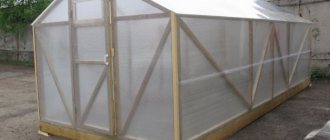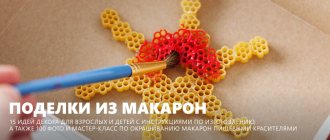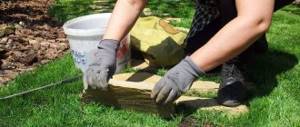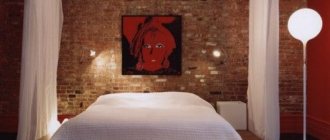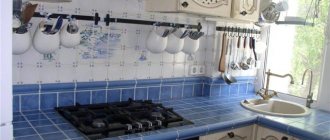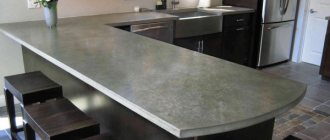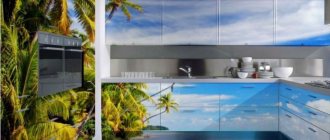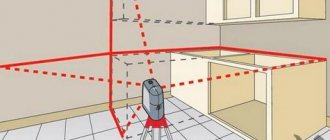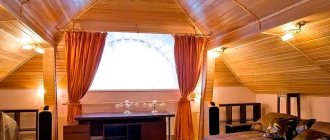What it is?
A florarium is a container with moisture-loving plants made of glass or transparent plastic. It has a narrowed neck or roof to create a special microclimate. Another interesting name for such a composition is bottle garden.
A terrarium for plants is a real godsend for small apartments, as it allows you to place several plants in it at once. A beautiful flowerpot with an unusual shape will make it a worthy interior decoration.
The soil is usually laid out in layers, which also looks quite beautiful. In the florarium, the root system of plants is visible, and this is very interesting.
The convenience of this kindergarten also lies in the fact that pets and children cannot reach its interior. After all, ordinary plants are often chewed by cats, and a curious child can tear off the leaves of an indoor succulent or run into the thorns of a cactus.
Over time, the florarium develops its own mini-ecosystem. This is useful for tropical plants that like excess humidity and lack of drafts.
Plant selection
Succulents that are suitable for florariums are very diverse both in appearance and in their structure. Their choice depends on the taste and preference of the manufacturer. The recommended list includes such plants.
- Cacti. These desert inhabitants look simply wonderful in a closed transparent container along with other plants. Their greenery and thorns begin to play with new colors, and the appearance of the florarium becomes elegant and stylistic. Cacti grow slowly and live well in conditions of infrequent watering, which makes them simply irreplaceable inhabitants of a plant terrarium.
- Rejuvenating, or “stone rose”. This plant has interesting leaves that gather in rosettes that resemble rose petals. Rejuvenated is undemanding to care, pleases with a variety of shapes and colors of leaves. Therefore, its proximity to cacti and other plants in the florarium will look very organic.
- Agave. The sharp leaves collected in rosettes of this succulent are visually associated with the Mexican prairies. The color of lanceolate shoots can be different: from plain grayish-green to emerald. Sometimes the leaf is emphasized by a yellowish border.
- Echeveria. This plant has fleshy shoots of a dark green color. In simple pots it looks rather inconspicuous, but it can easily reveal its beauty in a florarium. The gray pubescence of the leaves looks delicate, like a coating of frost on the shoots. It will go well with ferns and lichens.
- Aloe. This succulent can be more compact than the usual huge bushes in pots on our grandmothers’ windowsills. The fleshy, spiny leaves of this plant look great under glass. There are species whose shoots resemble geometric shapes, and there are also simpler specimens. All varieties of aloe are equally unpretentious, which is a huge plus for use in florariums.
- Haworthia. Externally, many people confuse this succulent with agave. Indeed, the shape of the bush is rosette, and the leaves are elongated and lanceolate. If we talk about the most common classic haworthia, it is distinguished by a denser and more compact shoot structure, as well as warty light stripes on the leaves. Haworthia looks great in florariums and has a big advantage - it grows slowly and does not require serious care.
- Adromiscus. This plant has perhaps the most interesting leaves of any succulent. Different varieties can attract attention with shoots in the shape of a club, triangles, clams - depending on your imagination. Therefore, everyone can choose this plant to suit their taste. The leaves are collected in small dense rosettes.
- Kalanchoe. This is not a rosette succulent. Usually all Kalanchoes form bushes, which will make the composition with them in the florarium complete in appearance. Specimens with decorative leaves are interesting in color. The numerous babies that Kalanchoe produces also look very cute.
- Ragwort. The most popular type of this plant is Senecio Rowley. It resembles a thread with beads that lie beautifully on the ground. A very interesting succulent, undemanding in care.
- Malefor. This succulent is often used in dry flower beds, as it amazes with its vigorous flowering. But it will also look original in florariums. Its leaves are small, strewing a long creeping shoot. The bluish bloom will effectively set off ferns and lichen.
- Crassulas. For example, the notorious money tree or milkweed look great together with cacti and other succulent plants. The fleshy leaves of Crassula with a rich green hue will brighten up any garden in a bottle.
A florarium is interesting when there is a play of contrasts in it.
Prickly and smooth, covered with bloom and bright green - all this variety can be embodied in a terrarium for plants. You can include more than just one type of plant in the composition. Allocasia, fetonia, mosses and mini-ferns will go well with succulents.
Magic garden behind glass - do-it-yourself florarium from A to Z
Miniature gardens behind glass seem like toys, but these are real living plants. Do you want the same one? Nothing could be easier!
What is a florarium
Since the time of the great geographical discoveries, people have been so impressed by the exotic flora of hot countries that they began to build winter gardens in our latitudes. Only the nobility could afford such a hobby, because not only did the plants themselves cost a lot of money, but impressive greenhouses also had to be built for them. The times of princes and spacious estates are over, but the craving for beauty remains. This is how the idea of florariums - gardens in small glass containers - was born.
In small apartments, a florarium will be a worthy replacement for bulky greenhouses. Thanks to the closed space, it maintains a special microclimate favorable for the growth and development of many plants. Behind glass you can recreate a piece of tropical forest, rocky or desert landscape.
It all depends on your taste and experience. Here it should be noted that different types of florariums require different preparation from their owners. For example, even a beginner who has never kept indoor plants before can master a florarium made from succulents. But creating a tropical forest will require some experience in this matter.
What are the advantages of growing mini gardens?
If you ask such a question to an ardent lover of indoor plants, we will get the obvious answer: “Because I like it!” So all the arguments in favor of a florarium are intended for those who want to take the first steps in creating mini-gardens.
- It is beautiful! A glass vase filled with living plants and decorative elements - pebbles, snags, figurines - looks unusual and stylish. Any interior will benefit from such decor.
- This is interesting! Caring for and observing a small ecosystem will be interesting for both adults and children. Usually the mother grows beauty, and the children and the rest of the household admire the result.
What you need to create a florarium
And you won't need much. Half of what you need can be found at home, and the other half can be bought at flower and pet stores. So, let's stock up:
- Glass container . The choice is great. You can buy ready-made, but not always cheap, containers - a special flowerpot, a round or goblet-shaped aquarium. You can assemble a house for plants with your own hands, but you can’t do it without a man’s help. And you can adapt everything that is available to your needs - jars, large glasses, pot-bellied bottles, vases.
- Drainage - expanded clay, sandstone, pebbles. You will need a lot of it, because in a closed container the excess water has nowhere to go. Abundant drainage will prevent the roots from turning sour.
- Activated carbon . It absorbs foreign odors and helps the soil stay fresh. It is usually used in tropical florariums.
- Substrate for plants . Succulents will need a light sand mixture, orchids will need a special soil based on tree bark, and the rest of the plants will need regular flower soil.
- Plants . The main condition when choosing plants is that they should be small and, preferably, slow-growing.
- Decorative elements . Beautiful pebbles, colored glass, moss, driftwood, ceramic or plaster figurines. Everything that seems beautiful to you and worthy of being added to the overall composition.
- Tools . It is most convenient to plant plants in a florarium and care for them using special devices. For planting in hard-to-reach containers such as a bottle or vase, a surgical clamp is ideal - it is convenient for them to fix the plant. If you don’t have such luxury, then regular large tweezers, Chinese chopsticks or knitting needles will come in handy. It is convenient to compact the soil with a wine cork or a school eraser pinned onto a knitting needle. For watering, a spray bottle, a small watering can or a medical bulb are suitable.
Which plants are suitable for growing behind glass?
Whatever plant you place under glass, it will begin to actively grow and develop there, because increased temperature and humidity are favorable for most green residents. But many plants like these conditions so much that they begin to go wild and over time fill the entire space, and soon they completely crawl out of the container.
To prevent this from happening, plants for the florarium must be selected with special care. For beginners, succulents would be an ideal option: Crassula, saxifrage, agaves. They grow very slowly and do not require difficult conditions. With their help, florariums are created with a desert or rocky landscape.
For tropical forests in a jar, small bushes of tradescantia, begonia, chlorophytum, phytonia, and pilea are suitable. These plants are prone to active growth, so tradescantia and begonias will have to be regularly pinched off the growing point, and plants such as chlorophytum will have to be completely replaced with new ones.
Orchids are considered the most difficult to care for. For their maintenance, spacious florariums are made with lighting and a ventilation system. For small containers, only species with short peduncles such as lady's slipper are suitable.
Suitable container
There are a lot of items on sale that can be adapted for a future succulent garden. In addition to the banal glass containers purchased in flower shops, you can even find a transparent case for plants at home.
- The aquarium is round and square. If you used to have fish, and their house was left idle, then it may well accommodate new inhabitants. Buying aquariums is also not difficult, the main thing is to choose the optimal size. Glass balls, originally intended for fish, look beautiful.
- Vases. An inexpensive option, which is also easy to find, is an ordinary flower vase. It can be purchased at any supermarket or hardware store. A minimalist transparent flower container can become a terrarium for succulents in a matter of hours.
- Vessels and flasks for experiments. In such containers, florariums will look ultra-modern. Of course, the flasks must be the right size, especially their neck.
- Big light bulbs. Mini plants will decorate such a vintage item as an old damaged light bulb. This terrarium looks as if succulents sprouted in it by accident when a light bulb was thrown out in the forest.
- Kitchenware. Decanters, glasses, flowerpots, teapots, jars - all this can serve as a container for succulents if it is made of ordinary glass without relief.
Read also: How to make a picture on the wall
What kind of soil is needed?
The easiest solution is to buy ready-made soil for succulents at a flower shop. It does not need to be fertilized, does not contain unnecessary bacteria and is convenient to use.
If you want to use homemade soil, then the optimal solution would be a mixture of peat and sand in equal proportions. You can also mix the soil with sand and bake it in the oven to kill mold and fungi. Since the florarium is a closed container, the chances of such problems occurring in it are significantly increased.
Be sure to use drainage at the bottom of the garden. It can be coarse sea sand, small pebbles or expanded clay.
Adding charcoal to your drainage will be a great solution.
Florarium design
Taking into account the features of the interior, you can choose a style for decorating flowers in glass. The following options are currently popular:
- Desert. In this case, the flowers will be succulents and cacti placed in soil with sand.
- Forest is a deciduous soil with a high content of peat and coarse sand. There should also be high humidity and a minimum of direct contact with sunlight. Plants for this style are fern, forest cactus and moss.
- Tropics. This style uses alocasia, orchid and bromeliad flowers, which require high humidity, good drainage and not direct sunlight.
- Mountains. This idea can only be realized in an aquarium, and the plants love abundant watering and shade in the summer, bright sun and moderate watering in the winter.
Popular compositions
Decorating a garden in glass is real creativity at its best. Currently, both a mixture of styles and separate categories of florariums are popular. Let's look at the main ones.
- Desert theme. A composition of small cacti will decorate a small windowsill or office interior. The style basis here is sand, which can be combined with stones and pebbles. They will look beautiful and make you look younger.
- Forest florarium. In such a composition it is important to design the tiers. In the background you need to place taller plants, and in the front - low ones (cacti, ivy, mosses). The set of succulents is perfectly accented by decorative ferns. In this style, it’s a good idea to add small artificial flowers or mushrooms.
- Stone geometry. Sharper forms of florariums can be emphasized with strict geometric shapes. To do this, select certain plants, for example, agave with clear lanceolate leaves. You can put large stones in such a terrarium.
Ceramic garden figurines of the smallest sizes are often added to florariums. They look appropriate with the dark greenery of the garden in a bottle and slightly dilute the cold composition.
How to do it yourself?
When creating a florarium with your own hands, it is important to strictly follow a certain algorithm. Planting plants correctly is not enough, because such a masterpiece includes many subtleties. We offer you a master class in the form of step-by-step instructions on the topic of creating a garden in glass.
- Decide on an idea. Every creation must please its creator. Therefore, choose exactly the style of florarium that you like.
- Choose a location. A lot depends on where the terrarium with plants will be placed. The future vessel must be selected taking into account the parameters of this place.
- Purchase and prepare a vessel. Choose a ready-made florarium in the store or find a suitable container at home. Before planting plants, you must thoroughly wash their future home and wipe the inside with alcohol. This will kill all pathogenic bacteria and also get rid of fingerprints, which will be very noticeable.
- Select plants and check their compatibility. A rapidly growing Kalanchoe will conflict with cacti that develop almost imperceptibly. It is better to choose those succulents and plants that have similar growth rates and susceptibility to environmental conditions.
- Purchase the necessary soil, drainage and decorations. Soil is the most important thing for the well-being of the future residents of the florarium. Therefore, you should pay close attention at this time. Decorations will complement any garden and make it unique.
- Prepare the table and place everything you need on it. To successfully create a florarium, you must be comfortable and comfortable. And to do this, you need to place all the elements so that you can reach them with your hand. Remove the plants from their pots and rinse their root systems under warm water.
- Wear gloves. Fingerprints inside the florarium after planting will be almost impossible to wipe off, and they will spoil the appearance quite badly.
- Add soil and other ingredients. Place a layer of sand about 1 cm on the bottom, then expanded clay with charcoal of the same thickness. Select the soil layer depending on the longest root system. The plant should be placed comfortably in the soil so that all roots are completely covered with soil.
- Make holes for the plants and plant them. They should not overlap each other with leaves. Keep this in mind, as they will still grow. After making holes at the optimal distance, begin planting succulents, being careful not to damage the roots. Leaves and shoots of plants should also not touch the walls of their new home.
- It's time for decoration. After planting all the plants, arrange all the planned elements: decorative sand, stones, ceramic figurines.
- Water the plants and cover with a lid. Lightly moisten the soil near each plant. Cover the florarium with a lid, if provided by the design.
Composition Basics
For an aquarium garden, select low specimens, with a maximum height of 20 cm and below. All of them must be resistant to high moisture concentrations and low light levels. For beginners, it is better to take small containers and place them with 3-5 small plants.
Advantages and disadvantages of open and closed containers
The advantages of open containers for florariums include:
- easy access to soil and plants for maintenance;
- regular air flow;
- a suitable microclimate for succulents, including cacti, which are accustomed to low air humidity.
The disadvantages of this method of growing a florarium include:
- the presence of open access to oxygen, which reduces the air temperature - this is not suitable for heat-loving plants;
- more frequent pruning is required because a constant flow of oxygen stimulates growth;
- strong fixation of the structure is required.
An indoor florarium also has advantages:
- minimum watering:
- slow plant growth due to lack of air access;
- all care consists of infrequent pruning and removal of dead leaves;
- ideal microclimate for tropical plants that require high humidity and high temperatures.
Disadvantages of closed containers:
- excess water that accumulates in the soil can lead to rotting;
- sometimes it is necessary to organize a double bottom to remove excess moisture;
- The container must have a lid for ventilation.
It is necessary to select vessels for floriums based on the living conditions habitual for the plants.
For which plants is a sealed container suitable, and for which ones an open container?
An open florarium is suitable for the following plants:
- cacti, aloe, crassula and other succulents;
- flowering plants - cyclamens, violets, azaleas;
- orchids.
For a closed container you can select the following plants:
Always consider the growth rate, especially when building a multi-level florarium. If the plants in the foreground of the vessel grow faster than those in the background, after some time the decorative effect of the composition will be disrupted.
Compliance with plant compatibility principles
Plants that have a slow growth rate can be planted in small containers. At the same time, it is difficult to judge it by the appearance of the plant, but its distinctive features are shortened stems like those of begonia and Saintpaulia. The “inhabitants” of the florarium are grouped depending on their requirements for light, temperature, soil and air humidity.
Also take into account the decorative properties - the shape, size of the sheet and its texture, color, outline. Use the principles of contrast or, conversely, similarity. Plants with large, dark green, dense leaves in the background and delicate, weightless leaves in the foreground will look beautiful.
Subtleties of care
Florarium is the best option for busy people. Its maintenance is minimal, but it is still necessary to carry it out periodically. It is as follows.
- Finding the right place. Direct sunlight is the enemy of such a creation, but complete shade will ruin the life of succulents. In summer you need to keep the florarium in the northern part of the apartment or office, and in winter you can place it under the occasional falling sunlight. If the plants begin to turn yellow, then they need an additional source of lighting. You need to keep the glass garden away from heating appliances. The optimal temperature for such interior decorations is from 22 to 28°C.
- Watering. It is necessary to moisten the soil in a florarium extremely rarely, no more than once a week. It is better to control watering yourself. If the soil inside has become dry in appearance, and the moss has begun to wrinkle a little, it is time to water the flowers. Excess moisture is extremely dangerous for such a garden, so it is important to monitor the amount of liquid inside. If you have poured water into the florarium, tilt it slightly and remove the excess with a rag or paper napkins.
- Ventilation. To avoid putrefactive processes, it is very important to ventilate the florarium. This is especially true for kindergartens with a closed lid. Do this several times a week, and then your creation will delight you for as long as possible.
Read also: What is thyme for?
As you can see from this list, caring for a florarium is not at all difficult. And the aesthetic pleasure from it many times exceeds the labor costs of creating it and, even more so, caring for it.
The florarium will perfectly complement and enliven any modern interior.
More and more often, creative people are making a florarium with their own hands as an original decoration for the home. Such a mini-garden in a bottle or jar allows you to create a piece of the tropical forest or desert in a city apartment. Purchased florariums are complete works of art and are very expensive, but you can make with your own hands a unique decorative living object that is in no way inferior in beauty to its ready-made counterpart.
Fresh flowers in a glass container are a wonderful home decoration
Living terrarium in a light bulb - original and bright
A DIY geometric florarium or a geometric terrarium will be an excellent gift for a loved one
Shelf life
If the manufacturing technology is followed, the composition will delight you with its appearance for three to five years . If the rose fades and deteriorates, pay attention to the temperature conditions and the distance from the sun of your composition.
You can read more about the shelf life of roses in a flask here.
A rose in a flask is a win-win gift for both women and men. It’s very easy to make a queen of flowers dressed in glass yourself, and then your gift will become truly original and unique. Follow our recommendations and then the composition will remain bright and fresh for a long time.
If you find an error, please select a piece of text and press Ctrl+Enter.
What is a terrarium in a jar and a florarium?
In general, a plant terrarium or florarium is an ordinary aquarium, only instead of water and fish it contains plants. The progenitor of florariums can be called the English scientist Nathaniel Ward, who at the beginning of the 18th century placed tropical plants in a closed space (Ward's box), thereby creating the most favorable conditions for them.
Florariums are a living miracle behind glass
Since then, plants unaccustomed to cold climates have been imported to different countries of the world and grown in specially equipped greenhouses, winter gardens or pavilions. It was not possible for everyone to equip a large greenhouse at home, and therefore mini-gardens with plants became widespread. In florariums, mostly small plants or dwarf plants for the home are grown, otherwise the contents of the glass garden would have to be changed too often. Thus, by properly arranging the microclimate inside it, a closed ecosystem in the bottle is formed and you create an almost eternal terrarium in a bottle with your own hands!
Containers for florariums can be of completely different shapes and sizes
Compositions of fresh flowers in glass vases in the form of pendants
Color stabilization methods
Solution 1
The easiest option for preserving flowers in a glass container is to use hairspray. You need to do this as follows:
- Take a flower on a low stem and remove excess leaves from it.
- Place it in a glass container with pre-prepared porridge (rice or semolina).
- Wait a week.
- Spray the flower with hairspray and let dry.
- Place in a glass container with a lid, avoiding contact with dust.
Solution 2
- Melt the substance in a water bath.
- Using tweezers, place the flower in the hot liquid and let the wax cover it.
- Place the flower in cold water.
- Place in a vase, periodically brushing off the dust with a cloth.
Solution 3
The most reliable way in which flowers retain their attractive appearance, elasticity and flexibility is embalming with glycerin. Procedure:
- Mix boiling water and glycerin in a 3:1 ratio.
- Cool to room temperature.
- Prepare a glass container, wash and dry, removing all stains and marks.
- Shorten the plant stems with an oblique cut and split them.
- Cut off spoiled leaves.
- Place in a container and fill with the prepared liquid. At first, you need to hold the flower with tweezers so that it does not float up.
- Seal the jar and place in a cool, dark place.
- Wait 2-3 weeks.
- Drain the solution and rinse the flowers.
- Repeat the procedure by placing the plants in a jar and filling them with the solution.
- Give flowers a beautiful appearance using tweezers.
- Seal with a lid and decorate.
Compositions of succulents in glass: options for florariums (photo)
Before making a florarium with your own hands, it is worth assessing the variety of existing models in order to choose the most suitable solution for the interior. All florariums can be divided into three groups:
- Aquarium-type florariums, when compositions are created in real aquariums, are considered the most suitable for organizing an independent ecosystem, since they have a lid and lighting.
You can choose a container for florariums of the most bizarre shapes
A real fragment of the desert in an aquarium
Beautiful composition in an aquarium
- Glass jars, vases for florariums and glasses of various shapes and configurations. You can also buy a special container for a florarium on the Internet, however, it is not at all necessary to buy the most expensive one.
In the original container, the florarium will look as impressive as possible
Florarium in an interesting shaped glass
Any bank can become a “home” for green residents
- The bottle version is spectacular, but the most difficult to make, since it is difficult to plant and care for plants through a narrow neck.
Florarium and plants in a flask - interesting and unusual
Advice! You should not choose a container for a florarium based on beauty or size. Both in an aquarium and in glassware, you can create real masterpieces even in the smallest space. Miniature containers with 3-4 plants inside look very impressive.
Florariums can be placed in different ways: they are mounted on walls, placed on a table or windowsill, suspended from the ceiling, etc.
You can decorate a home decorated in almost any style with many florariums.
Geometric hanging florarium in the garden
The filling of the florarium can also be completely different, but you need to choose for joint cultivation those representatives of the flora that require the same conditions. This allows you to create real natural areas in miniature in glassware: a mountain landscape, desert plants, tropics or a piece of dense forest.
Unusual landscape with vegetation in your home
A piece of mossy forest in a glass ball
A miniature desert will fit perfectly into a city apartment
Magic garden behind glass - do-it-yourself florarium from A to Z
Miniature gardens behind glass seem like toys, but these are real living plants. Do you want the same one? Nothing could be easier!
What is a florarium
Since the time of the great geographical discoveries, people have been so impressed by the exotic flora of hot countries that they began to build winter gardens in our latitudes. Only the nobility could afford such a hobby, because not only did the plants themselves cost a lot of money, but impressive greenhouses also had to be built for them. The times of princes and spacious estates are over, but the craving for beauty remains. This is how the idea of florariums - gardens in small glass containers - was born.
In small apartments, a florarium will be a worthy replacement for bulky greenhouses. Thanks to the closed space, it maintains a special microclimate favorable for the growth and development of many plants. Behind glass you can recreate a piece of tropical forest, rocky or desert landscape.
It all depends on your taste and experience. Here it should be noted that different types of florariums require different preparation from their owners. For example, even a beginner who has never kept indoor plants before can master a florarium made from succulents. But creating a tropical forest will require some experience in this matter.
What are the advantages of growing mini gardens?
If you ask such a question to an ardent lover of indoor plants, we will get the obvious answer: “Because I like it!” So all the arguments in favor of a florarium are intended for those who want to take the first steps in creating mini-gardens.
- It is beautiful! A glass vase filled with living plants and decorative elements - pebbles, snags, figurines - looks unusual and stylish. Any interior will benefit from such decor.
- This is interesting! Caring for and observing a small ecosystem will be interesting for both adults and children. Usually the mother grows beauty, and the children and the rest of the household admire the result.
What you need to create a florarium
And you won't need much. Half of what you need can be found at home, and the other half can be bought at flower and pet stores. So, let's stock up:
- Glass container . The choice is great. You can buy ready-made, but not always cheap, containers - a special flowerpot, a round or goblet-shaped aquarium. You can assemble a house for plants with your own hands, but you can’t do it without a man’s help. And you can adapt everything that is available to your needs - jars, large glasses, pot-bellied bottles, vases.
- Drainage - expanded clay, sandstone, pebbles. You will need a lot of it, because in a closed container the excess water has nowhere to go. Abundant drainage will prevent the roots from turning sour.
- Activated carbon . It absorbs foreign odors and helps the soil stay fresh. It is usually used in tropical florariums.
- Substrate for plants . Succulents will need a light sand mixture, orchids will need a special soil based on tree bark, and the rest of the plants will need regular flower soil.
- Plants . The main condition when choosing plants is that they should be small and, preferably, slow-growing.
- Decorative elements . Beautiful pebbles, colored glass, moss, driftwood, ceramic or plaster figurines. Everything that seems beautiful to you and worthy of being added to the overall composition.
- Tools . It is most convenient to plant plants in a florarium and care for them using special devices. For planting in hard-to-reach containers such as a bottle or vase, a surgical clamp is ideal - it is convenient for them to fix the plant. If you don’t have such luxury, then regular large tweezers, Chinese chopsticks or knitting needles will come in handy. It is convenient to compact the soil with a wine cork or a school eraser pinned onto a knitting needle. For watering, a spray bottle, a small watering can or a medical bulb are suitable.
Buy a florarium or make a florarium with succulents with your own hands?
If it is not possible to purchase a ready-made composition in a glass vase, you can do it yourself. When creating a florarium, the following items and tools will be useful:
- Glassware or aquarium.
- Drainage to the bottom (pebbles, broken bricks, coarse sand, etc.).
- Earth, sand or soil (depending on the plants used).
- Regular tools for planting (if the container is large) or tweezers, as well as a blade, crochet hook and spoon attached to long sticks (when the florarium is made in a bottle).
- Water in a syringe or bottle with a spray bottle for irrigation.
- Decorative decorations (beautiful stones, colored sand, figurines of animals or fairy-tale characters).
A set of everything necessary to create a florarium
Preparatory stage
Before starting to organize a florarium, you need to do the following - prepare the container, soil, select plants, study the basics of composition and think about how the “inhabitants” of the florarium will be located inside the transparent container.
Choosing a location for a florarium
A florarium of any type - sealed or open - should not be placed close to the window, since the sun's rays will be refracted through the glass and can cause leaf burns. Accordingly, choose dark places where direct rays do not reach during the day. Only in winter, when there is not enough sunlight, can you move the container to the windowsill.
If you have chosen light-loving plants, arrange artificial lighting. In addition to the fact that it will create a good microclimate for the inhabitants of the florarium, the decorative effect of the composition will improve. When watering, try not to wet the glass, as drips inside the container will worsen the degree of light penetration and decorativeness. The same rule applies to condensation - ventilate a tightly closed vessel regularly so that drops of moisture and mold do not appear on the inner surface of the glass.
A florarium can be organized not only in a dry container, but also in water. A miniature pond looks original, but requires more care, since with high humidity, flowering begins immediately.
Preparing the container and soil
The following vessels can be used as containers for a home greenhouse:
- flask;
- decanter;
- a round glass ball with a hole at the top;
- candy bowl;
- large light bulbs;
- glasses;
- glasses;
- regular and decorative jars;
- aquariums with and without lids.
Sand and gravel or gravel culture is suitable for growing succulents. Gravel and sand can be collected at the seashore or purchased ready-made mixtures in the store. Before planting, plants require treatment against bacteria and fungi. It is optimal to heat the mixture on a baking sheet or in a frying pan, after washing it under running water.
Natural materials are distinguished by the natural beauty of their shades, which you can combine to create multi-colored stripes or spots on the bottom of the florarium. Ready-made mixtures are often painted in bright colors.
In addition to sand and gravel, you can use pre-crushed activated carbon, drainage, hydrogel, gravel, irregularly shaped stones, and pebbles. Suitable decorations include shells, driftwood, and decorations for ordinary aquariums made of plastic and ceramics.
Planting technology and decoration
Pre-selected plants should be planted in a prepared container as follows:
- Wipe and polish the vessel, especially the inner walls; you can use a ready-made glass cleaner. Wear latex gloves to avoid leaving fingerprints on the glass.
- Carefully remove the plants from the pots, shake off the roots from the soil and rinse under warm water.
- Place a layer of sand about 1 cm thick on the bottom of the vessel. Place expanded clay with activated carbon and hydrogel or other fillers in the center. Place the plants in the bowl, and fill the gaps with colored ready-made or self-quarried sand, gravel, and crushed stone. It is important that the leaves do not touch the walls of the container.
- Arrange the decor in such a way that as the inhabitants of the florarium grow, it is not covered by leaves.
DIY terrarium or how to make a florarium in a jar (step-by-step instructions with photos)
Florariums are easy to make with your own hands according to the following instructions:
- First you need to prepare a glass container for the florarium. It is advisable to wash it well and degrease the inside with alcohol or vodka.
- Activated carbon should be placed at the bottom of the container so that it is responsible for absorbing harmful organic substances, freshening the soil and preventing the appearance of mold and mildew. Instead of activated carbon, you can use regular drainage for indoor plants, but in large quantities, since there are no holes in the jar or bottle through which moisture would escape.
Read also: Rhode Island chicken breed description photo reviews
All the “ingredients” for the future masterpiece
An important stage in creating a florarium is the correct choice of soil.
You can decorate a cactus terrarium with whatever your imagination suggests.
Advice! There are several options for organizing the space inside the florarium. Some phytodesigners advise planting all the flowers in a bottle with your own hands at the same level so that they receive the same amount of light, heat, water, etc. However, in such a small space, all the components necessary for development will one way or another be received by all plants, and therefore it is better to think about the decorative component.
If the florarium will be in the center of the room, it is desirable that the composition be even and have a beautiful view from all sides. If the florarium is leaning against a wall or window, you can make several levels: those plants that are further away are placed a little higher.
Several florariums with different plants look very impressive
Methods of preserving flowers: in glycerin, gelatin and salt.
There is a way, and more than one, to preserve flowers almost in their original form. We are talking about preserving flowers in glycerin, gelatin and, of course, salt. What kind of canning can do without salt! The latter method is only suitable for compositions in closed vessels and does not involve removing the flower from the solution.
Let me note right away that flowers in gelatin and glycerin remain just as flexible and only change color slightly. They become more faded. If you want a truly magical result, don't wait. And as soon as you receive a bouquet as a gift, select a few flowers for canning. The only “but” is that foliage that is too young cannot be preserved with glycerin.
It is better to take dense, not too young flowers. Oddly enough, too young foliage cannot be preserved with glycerin. It is better to remove excess leaves immediately. Carefully examine the flower you decided to preserve. If you see damaged petals and leaves on it, then it is better not to use such a flower. The stem must be cut diagonally, remove the skin or bark (if it is a twig of lilac or apple tree, for example) approximately 7 cm from the bottom and split it. This is necessary so that the solution penetrates better into the flower.
Glycerin is diluted with water in the ratio: 1 part glycerin to 2 parts hot water. The resulting liquid is poured into a jar, vase, or any other beautiful vessel to a height of approximately 20 cm and placed in a cool, dark place. Penetrating into the leaves, glycerin absorbs their liquid and replaces the moisture evaporating from the leaves and stems with glycerin. The liquid level must be maintained, therefore, as it dries, the solution must be topped up. This only applies to open containers.
In closed vessels, the level remains virtually unchanged. It takes from two weeks to two months to completely soak, depending on the size and thickness of the stems. But the result obtained is worthy of admiration! For this reason, it is worth being patient and waiting. Plants preserved in this way retain their elasticity and flexibility and do not require special care; they can be wiped with a damp cloth to remove dust.
It takes from two weeks to two months for complete saturation, but the result is certainly amazing!
You can also preserve individual leaves. It takes much less time from 2 to 3 weeks. But you also need to take into account some features. Fern leaves, for example, release milky sap after cutting, which can clog moisture-conducting channels in the stem. In this case, the end of the stem should be held over the flame until it darkens.
Glycerin only guarantees us the preservation of the flower’s shape. But you can “conjure” the color yourself.
In order to give plants the required color, you need to feed the plants with artificial water-soluble dyes, adding them to a glycerin solution. You can use brilliant green, acrylic, oil, silver, colored transparent varnishes, now craft stores provide us with a large assortment of similar products.
It happens that plants were unsuccessfully preserved and white oxidized spots formed on them, which spoil the appearance of our plants. You can correct the situation by bleaching the plants for a couple of days in the following solution:
1. Water 500g. 2. Denatured alcohol 160g. 3. Acetone 160g. 4. Oxalic acid 50g. 5. Acetic acid 99% -10g. 6. Sodium bisulfate 120g.
Flowers in decorative bottles.
The beauty of these decorative bottles is difficult to put into words. And even a photograph cannot fully convey to you their brightness and tenderness.
To create a composition you need a beautifully shaped transparent bottle. It must be washed well and disinfected with boiling water. Plants can be planted immediately by splitting the stem and filled with a solution of glycerin and water in a 1:2 ratio. For the best effect, before putting the plants in the bottle, you can put them in a solution for several days so that they are saturated with it. Then you put the flowers in the bottle, carefully straighten them with chopsticks, carefully fill them with the solution and seal the neck hermetically. The neck can be additionally decorated with twine, ribbon or filled with sealing wax
Fresh roses or petals, dahlias, lilies, chrysanthemums, etc. are well suited for decorating bottles. At the same time, you can put shells, beads strung on a thread, small figurines, and beautiful buttons in the bottle. Fresh flowers can be replaced with artificial ones.
Another reliable preservative is a strong solution of gelatin with sugar, approximately 1/1. You can also use a very strong saline solution.
Plants for the garden in a bottle: how to choose the right one?
It is better to choose slow-growing plants to keep in a glass container, otherwise you will have to update the composition very often. Typically, plants themselves slow down their growth, since the root system simply has nowhere to develop in such a small space. In some cases, it is appropriate to slightly trim the roots when replanting to slow down their growth.
When choosing plants for a florarium, you need to consider how they get along with each other. It is advisable to choose options that recreate a certain natural area behind the glass:
- To create a desert with your own hands, all kinds of succulents (cacti, aloe, spurge, crassula, etc.) are suitable. By the way, a florarium with cacti is practically the easiest and most classic option.
Thanks to the variety of succulents, you can create your own unique piece of the desert
- Ferns and moss can give the effect of a dense forest.
A wonderful florarium with moss and decorative figurines will be an excellent New Year's decor
A piece of forest in a florarium
- You can create your own tropics using orchids, dieffenbachia, bromeliads, alocasia, etc. (by the way, when using flowers for a florarium, the main thing is not to overdo it: 1-2 flowering plants are enough). It is the florarium with orchids, created with your own hands, that has recently become at the peak of popularity among flower growers. Tradescantia in a bottle is also common.
A piece of the tropics in the interior
- The mountain landscape will be recreated by succulents with various ivies.
Mountain landscape in the florarium
Advice! If the plants are nevertheless selected for their beauty, and not for the same needs, you can use the following trick: plant them in different pots or containers and cover the surface with stones. It will be possible to care for each of them individually, and from the outside it will seem that the entire composition is in the same soil.
Care Tips
Caring for a florarium will not cause problems even for novice gardeners:
- regularly spraying the leaves with clean water;
- watering plants depending on their needs;
Regular watering is extremely important for florarium residents
Advice! When creating a closed florarium, watering is carried out very rarely. It is only important to ventilate the florarium vessels to rid the container of condensation. It is also important to choose the right plants for an indoor florarium, because... A sealed terrarium is not for everyone.
- pruning old branches;
- keeping glass surfaces clean;
- removal of diseased or overgrown flowers.
A glass container is a temporary shelter for plants. Succulents in a glass vase will someday need a larger home
It is worth remembering that a florarium is not a decoration for life. No matter how slowly the plants grow, one day they will become cramped in the container. In this situation, they are transplanted into ordinary pots or greenhouses. In the empty glass container, you can again create new landscapes, a terrarium for flowers and other ideas, bringing to life the wildest dreams of a florist.
Tags
I love flowers very much, and just recently I was lucky enough to be at a flower exhibition. This is something amazing and magnificent! Most of all I was captivated by compositions in glass , namely in glasses and glasses.
The florist, using fresh flowers and ordinary tableware, created beautiful compositions that can become a bright highlight of any holiday, be it a wedding, birthday or corporate event. Or you can use this idea and create something similar at home.
Editorial “So Simple!” I have prepared for you 21 unforgettable options for flower arrangements in glasses and glasses .
Advantages and disadvantages
One of the obvious advantages of home-made products is cost-effectiveness.
- The second advantage is uniqueness - you can realize any fantasy and idea with a rose of any color and size, as well as choose an unusual flask.
- With due skill and accuracy, it is possible to turn this process into a small business that generates income.
One of the disadvantages is that if the manufacturing technology is not followed, the rose in glass will begin to fade and dry out.
Flowers in glass
- I look and admire these cute compositions in colorful circles.
- What do you think of this idea of using waffle cones? Isn’t it wonderful?
- Refined elegance!
- And this composition can be a wonderful addition to the wedding of your dreams.
- I have never seen such a solution for decorating glasses. Wonderful for summer!
Create magnificent flower arrangements to decorate a festive table setting or simply to create coziness in your home. Extend the life of fragrant flowers in any room! Summer is in full swing, and there will be more and more flowers every day. This means that life will be brighter and more colorful!
I wish you more inspiration and a flowery mood, regardless of problems and bad weather!
If you, like me, were inspired by this collection, share it with your friends.
How to achieve the correct humidity?
The correct balance of the humid atmosphere in the vessel is achieved only by error and trial. If too much moisture is poured into a vessel, the plants will begin to rot, and condensation will constantly collect on the walls of the vessel. If there is not enough water, plants stop growing. If the soil in the container is too wet to the touch and looks, then the lid should be removed and left for two to three days. You will see when the soil dries out when you can cover the garden again.
When the temperature in the room drops, steam may appear on the walls of the vessel; this is a normal phenomenon, especially in the morning. The condensation should disappear in the morning; if this does not happen, it means the soil is very wet and you need to open the vessel for the day. If condensation does not form during a sharp drop in temperature, it means the soil is dry.
See also our material on this topic: Terrariums for plants, or Florariums.
